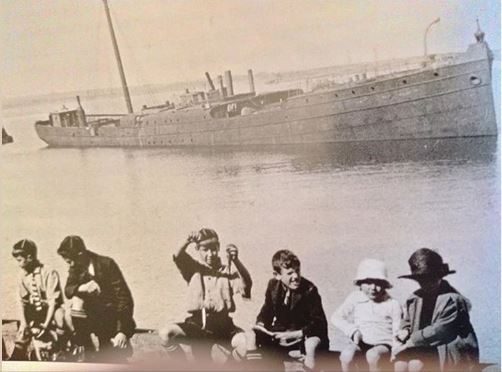The Te Anau – 100 years a fixture at Port Whanganui

The Te Anau – 100 years a fixture at Port Whanganui

In 1924 a once elegant trans-Tasman passenger vessel arrived in Whanganui — and it never left. This was the Te Anau, now part of the port’s breakwater. It certainly didn’t arrive in style, having been dismantled at Port Chalmers, towed here, and on 23 August that year, sunk on top of the hulk Endeavour.
Built in Scotland of steel and weighing 1652 tons, the Te Anau was owned by the Union Steam Ship Co. from 1879 to1924. It carried passengers and cargo between Australia and New Zealand, and was later engaged mainly in New Zealand coastal trade.
Media coverage on its launch was enthusiastic, noting that “The Te Anau brings the number up to the seventeenth vessel now belonging to this energetic and prosperous steamship company. Her fittings and appointments are of the most complete and luxurious description.”
The media gushed over the vessel, even recording, “There is also an apartment called the Bridal Chamber, fitted up exclusively for young couples taking a tour. This apartment is richly furnished and decorated in a chaste manner, having pretty panels and elegant cornices, supported by cupids and love birds.”
The staterooms accommodated about 130 first-class passengers. Each room had a wash-hand basin, while all had pneumatic bells communicating with the pantry. A second cabin gave accommodation to about 85 second-class passengers.
On arrival in Wellington, the vessel was opened for public inspection and some 3,000 people took advantage to visit it.
Over the years, the Te Anau encountered some rough voyages. In 1880 it was disabled in a cyclonic gale that extended from Bluff to Mercury Bay in the north. At midnight, 370 miles from Bluff, steaming against wind and tide, it lost a propeller blade. The violent vibration caused the passengers to start from their beds. There was nothing for it but to return to Bluff. In 1884, it took 27 hours to travel from Lyttelton to Wellington, 175 nautical miles.
The Te Anau’s hull rests in a trench dredged for it. The basin wall was later extended with 1800 tons of shellrock, closing the gap.
Shared with permission of the author Dave Scoullar of the River City Press.


